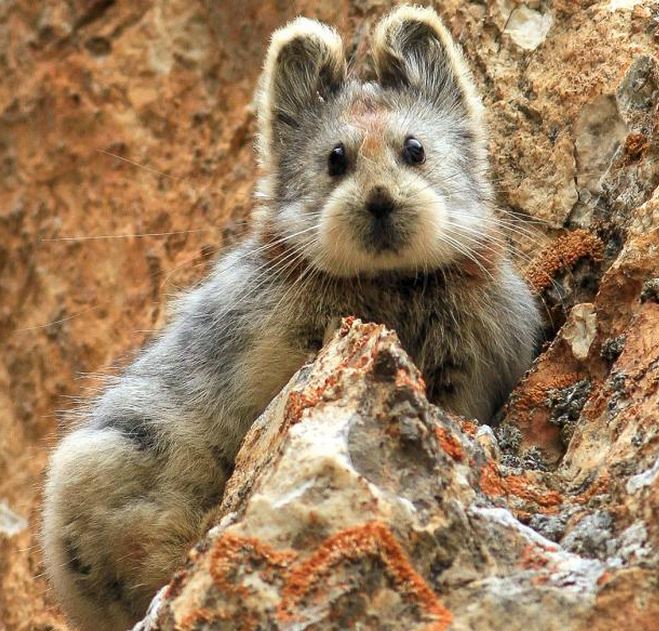The Ili Pika looks like a cross between a a cute ‘magic bunny’ and a cuddly toy teddy. It lives from 2,800 to 4,100 metres (9,200 and 13,450 feet) above sea level and feeds on herbs in the Tian Shan mountains of Xinjiang, a province in northwest China.
China’s 8-inch-long (20 cm) little furry animal has gone viral on social media worldwide, and appears to have been voted the cutest endangered animal on Earth. Let’s hope its recent fame raises awareness about its precarious outlook, which may improve its long-term chances of survival.
Li Weidong, a retired conservationist, has spent the last three decades documenting and protecting Ili Pikas – a super-elusive rabbit-like mammal found only in this region of China. With an estimated population of just 1,000, it is today rarer than pandas.

The elusive Ili pika (Ochotona iliensis). (Credit: Li Weidong)
It was first spotted in 1983 (by Mr. Li). Since then, the furry creature has only been observed a handful of times. We know virtually nothing about its ecology and behavior. According to National Geographic, it has only been spotted 29 times.
Mr. Li describes the first time he saw a Ili Pika:
“I had been climbing a mountain for four hours, and was just catching my breath, when suddenly, I saw the shadow of a small creature running by.”
“I sat down next to some rocks, and suddenly two bunny ears emerged from the crack of one of the rocks. The little thing was staring at me, blinking at me. I thought it was the most beautiful and bizarre creature I’d ever seen. I couldn’t believe my eyes.”
Mr. Li had not been looking to discover new species when he first spotted an Ili Pika, he had been sent by the Chinese Government to study natural resources and infectious diseases.
Several different kinds of pikas live on the rocky mountainsides of Asia, North America, and parts of Eastern Europe. They are very small, rabbit-like mammals with short legs, round ears and no tail. The one Mr. Li spotted in 1983 was different from all the others – it had three distinct brown stripes on its forehead and around its neck.
Three years later, after carrying out research, Mr. Li and colleagues named the creature Ili Pika (Ochotona iliensis), because it was found in the Ili Prefecture.
After making his discovery, Mr. Li and colleagues decided to try and protect the pikas. However, they did not want any publicity, and believed it was better to leave them in their natural habitat.
Ili Pika facing a serious threat
While managing to prevail, despite being preyed on by birds, weasels and foxes, the Ili Pika now faces a much greater threat. Its habitat is today 71% smaller than it was three decades ago – partly due to climate change, and also because humans have moved into its grazing area from the bottom of the mountain.
Mr. Li said:
“The Ili Pikas all live on isolated mountain tops, so their habitats are highly fragmented. Losing even one is detrimental for the entire group.”
After 1983, Mr. Li saw the elusive Ili Pika a few times until 1990, after which there were no sightings for twenty-four years.
Ever since National Geographic published an article about Mr. Li and the Ili Pika, he has received several letters from people offering to help protect the animal.
Mr. Li said:
“Many people have written to me to say they want to help me protect the pikas. But more attention also means more danger for them. We cannot let them disappear in front of our eyes.”
Video – The Collared Pika
This short documentary is about the North American Collared Pika.
